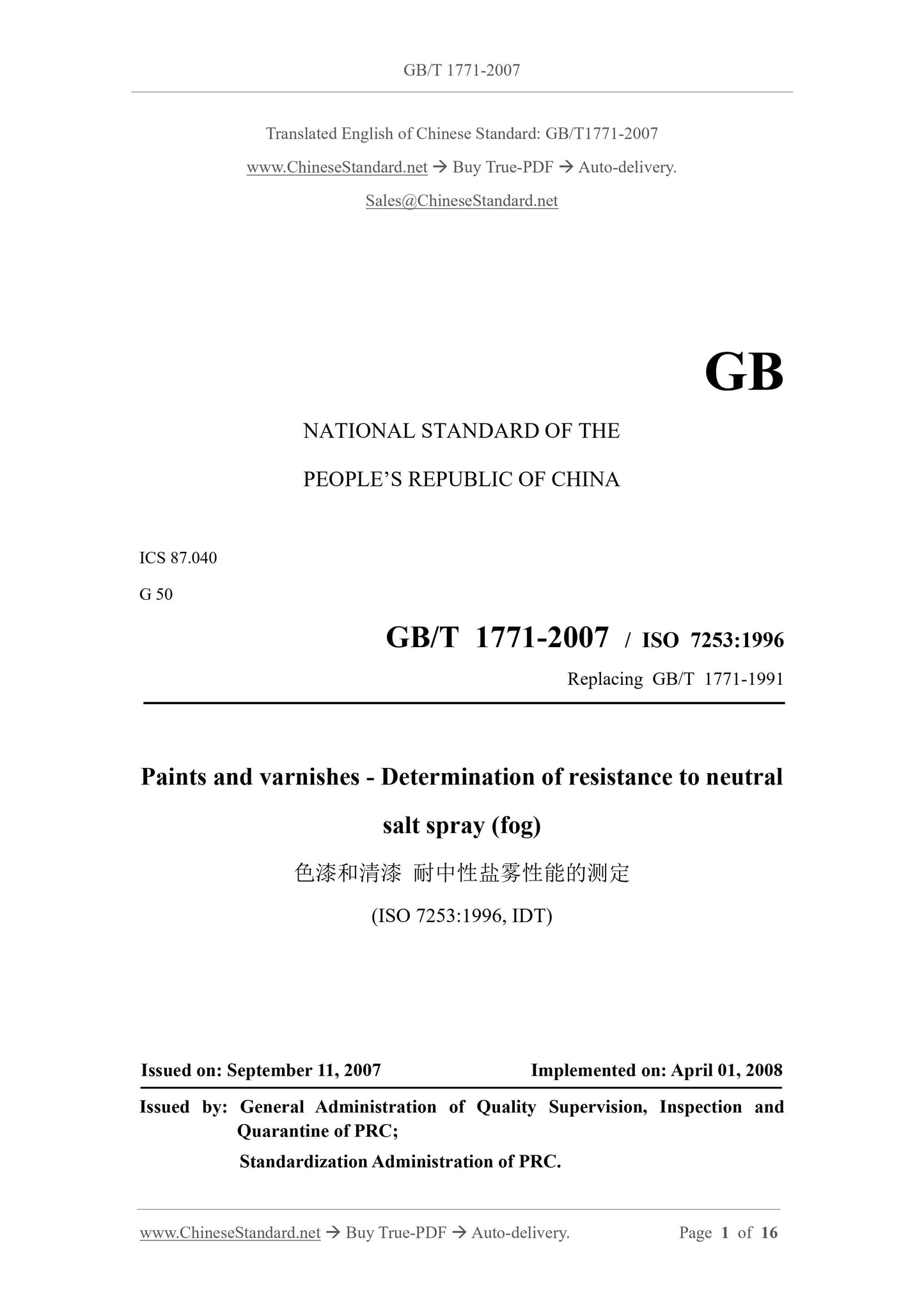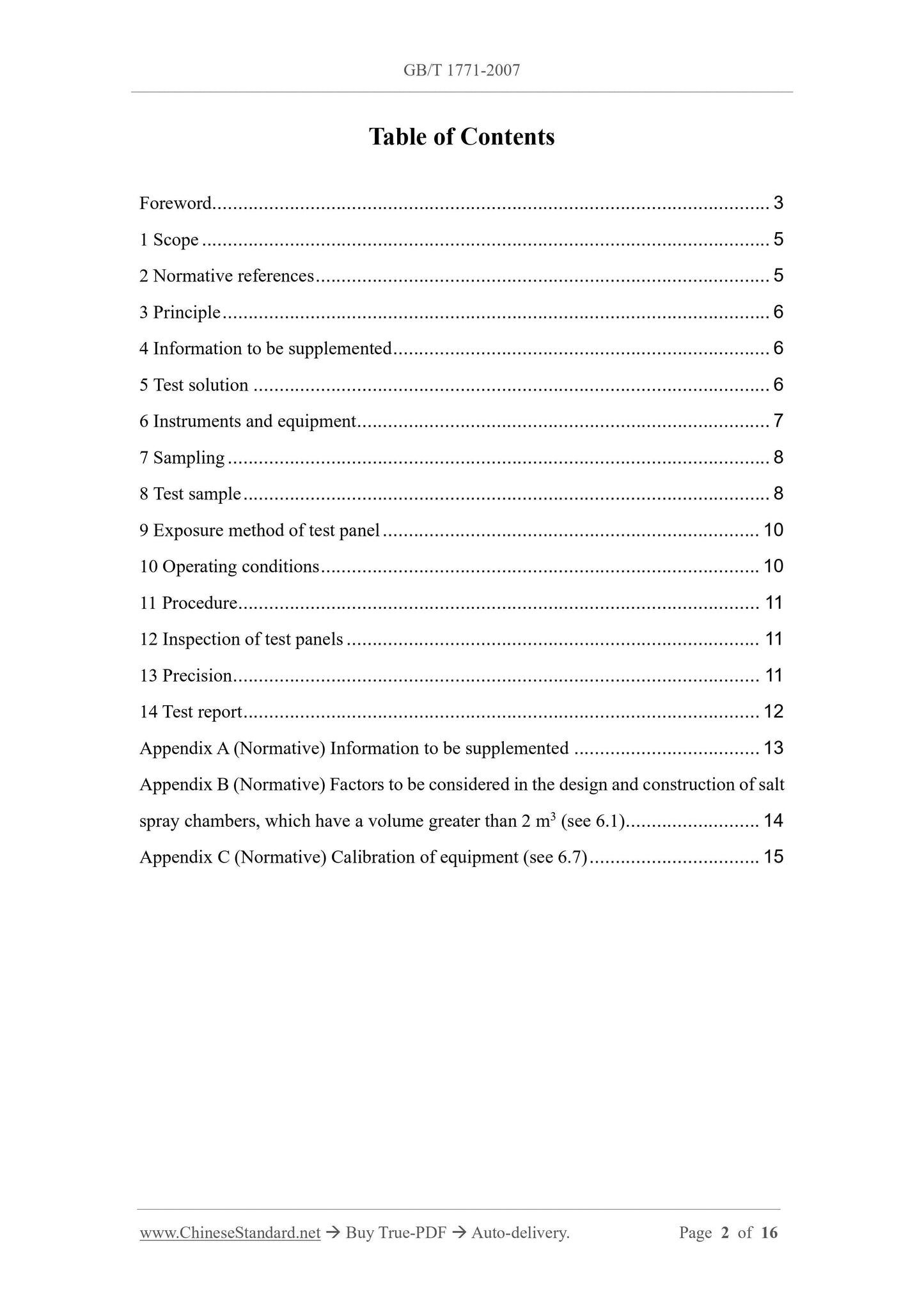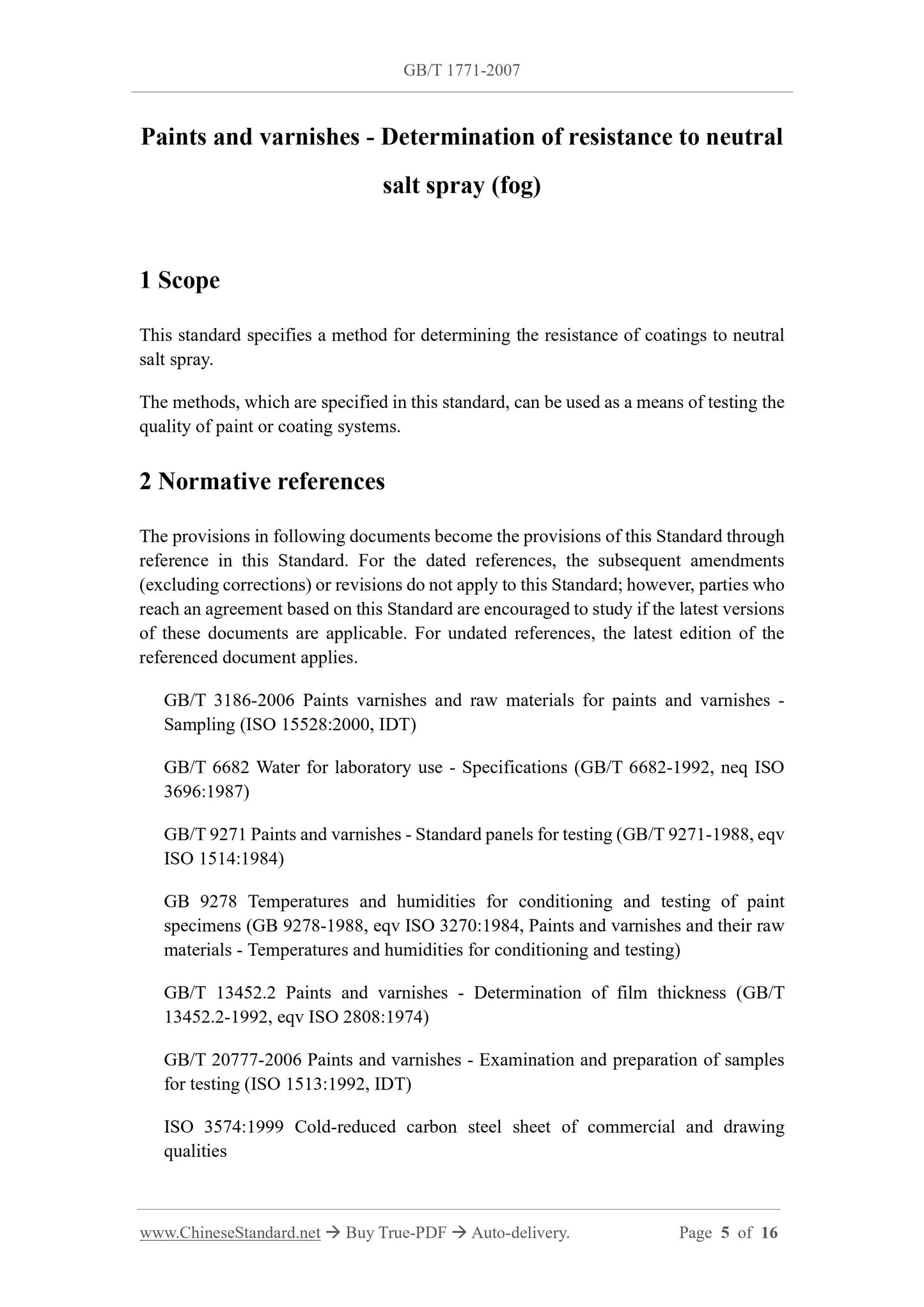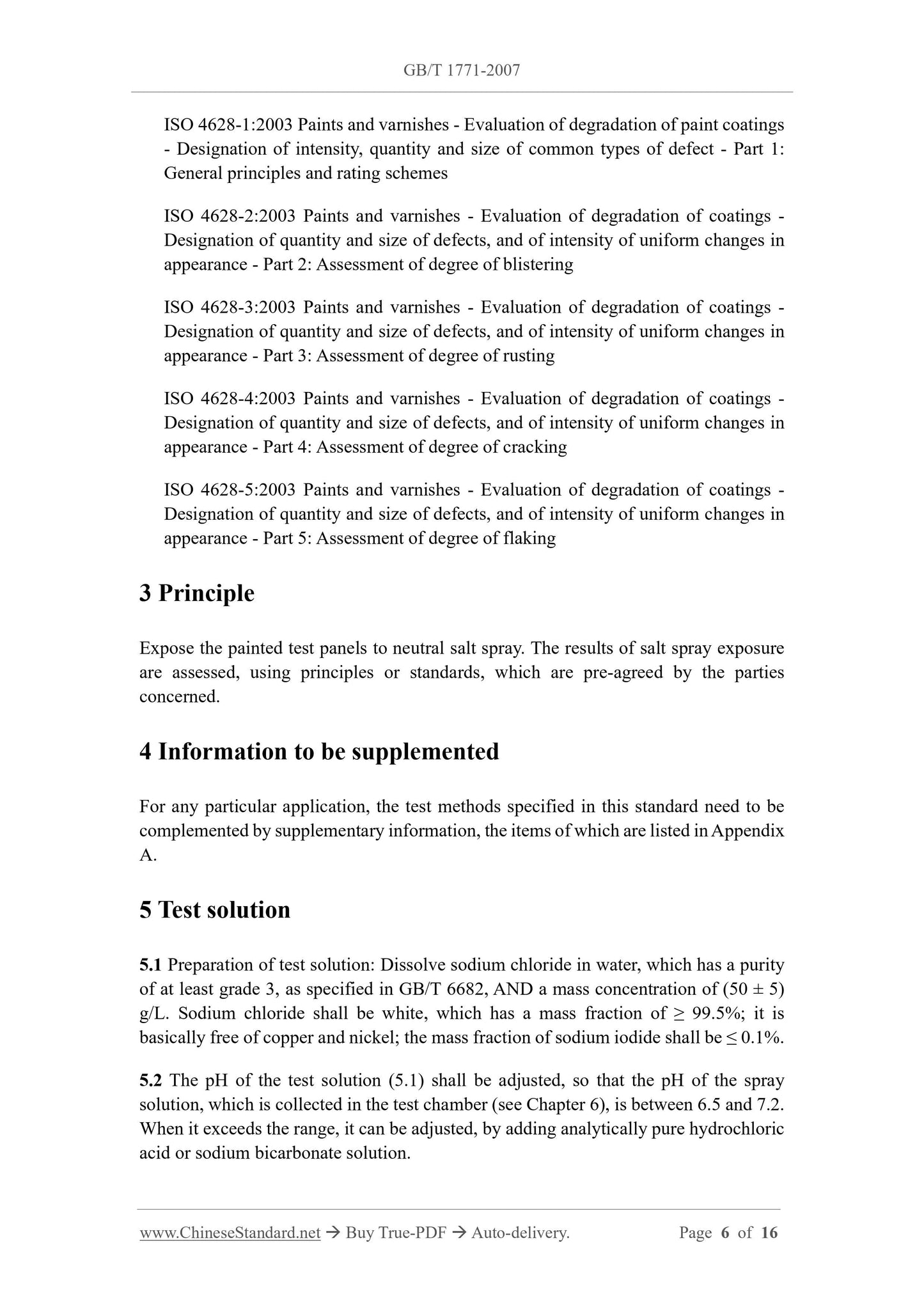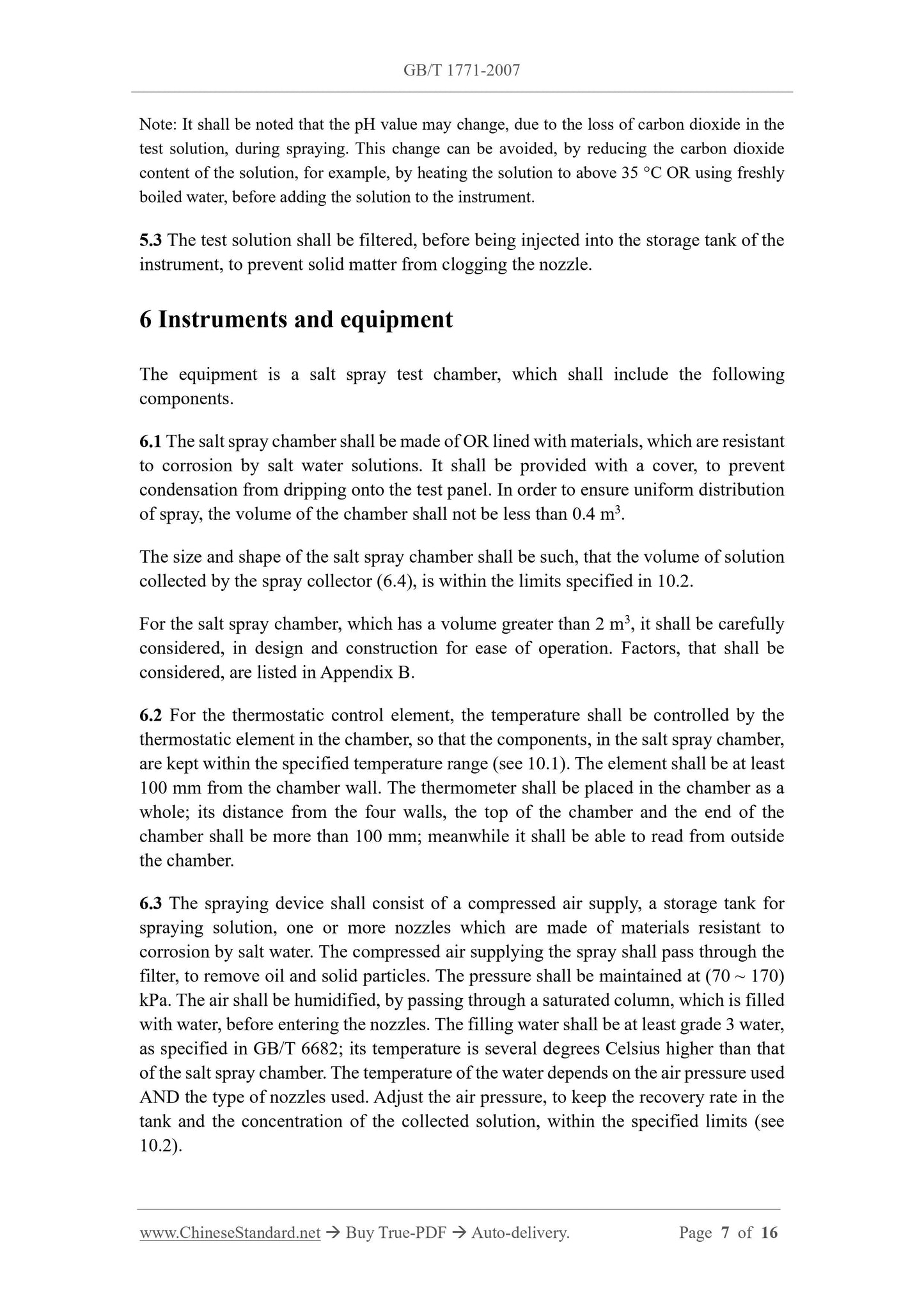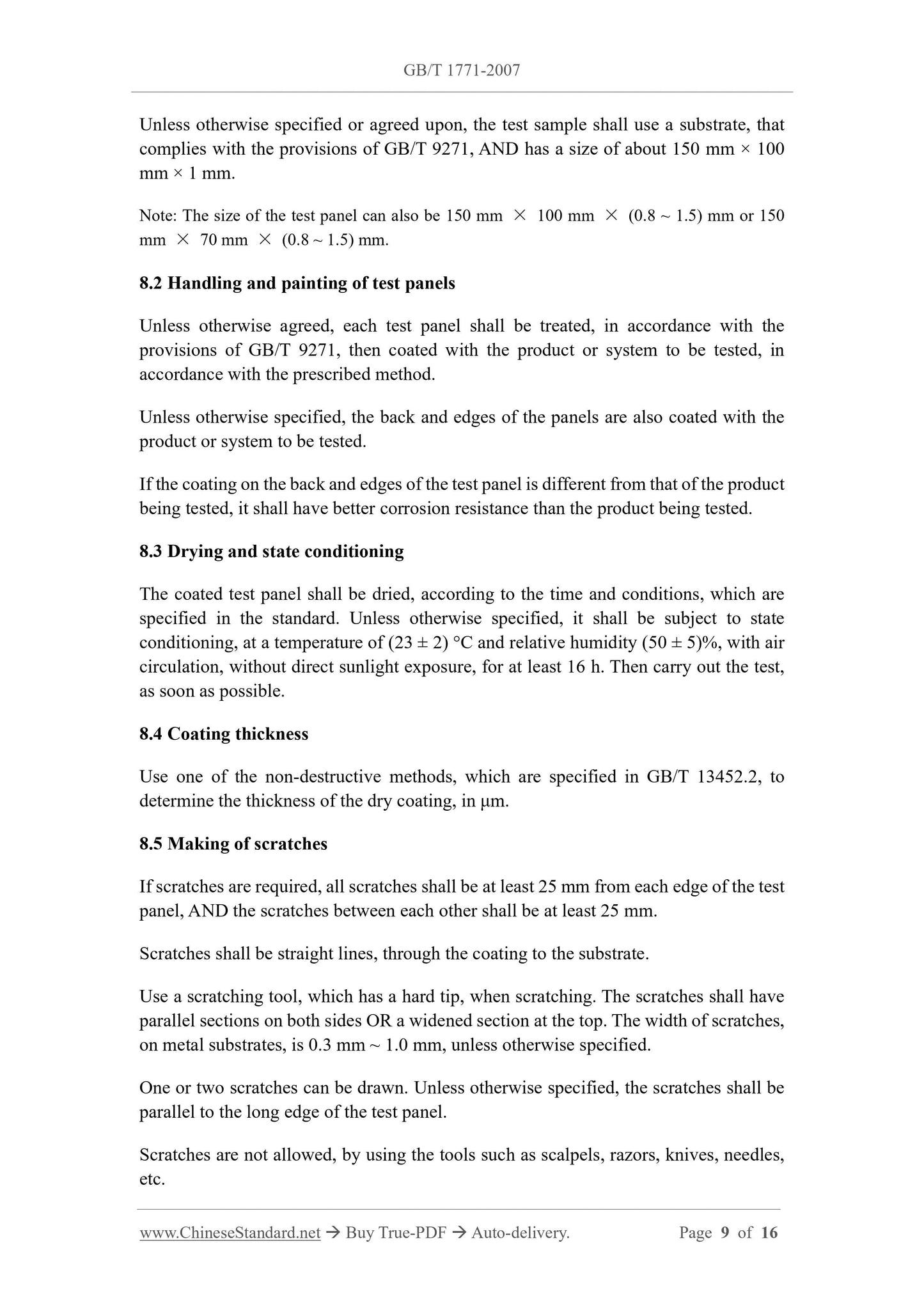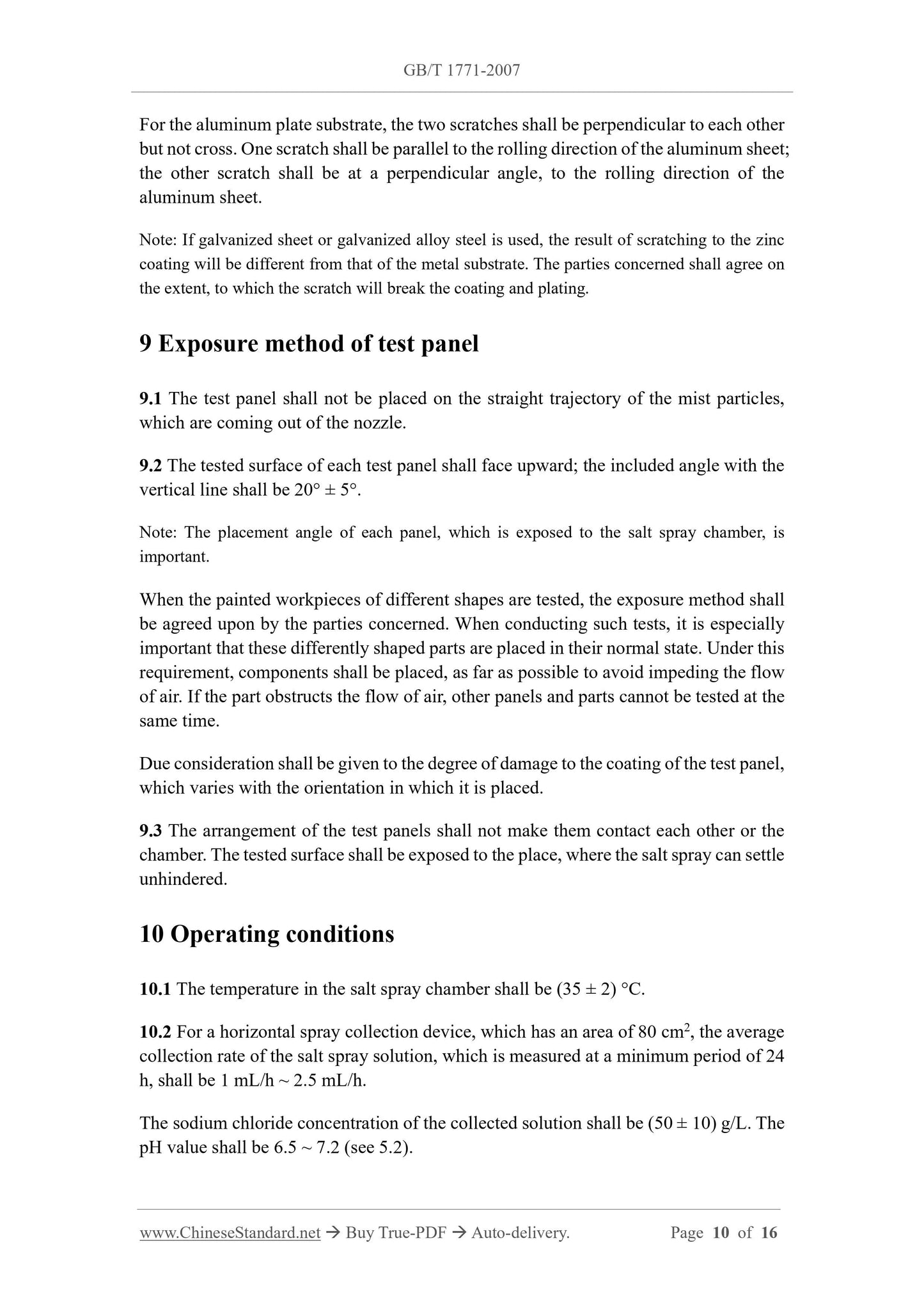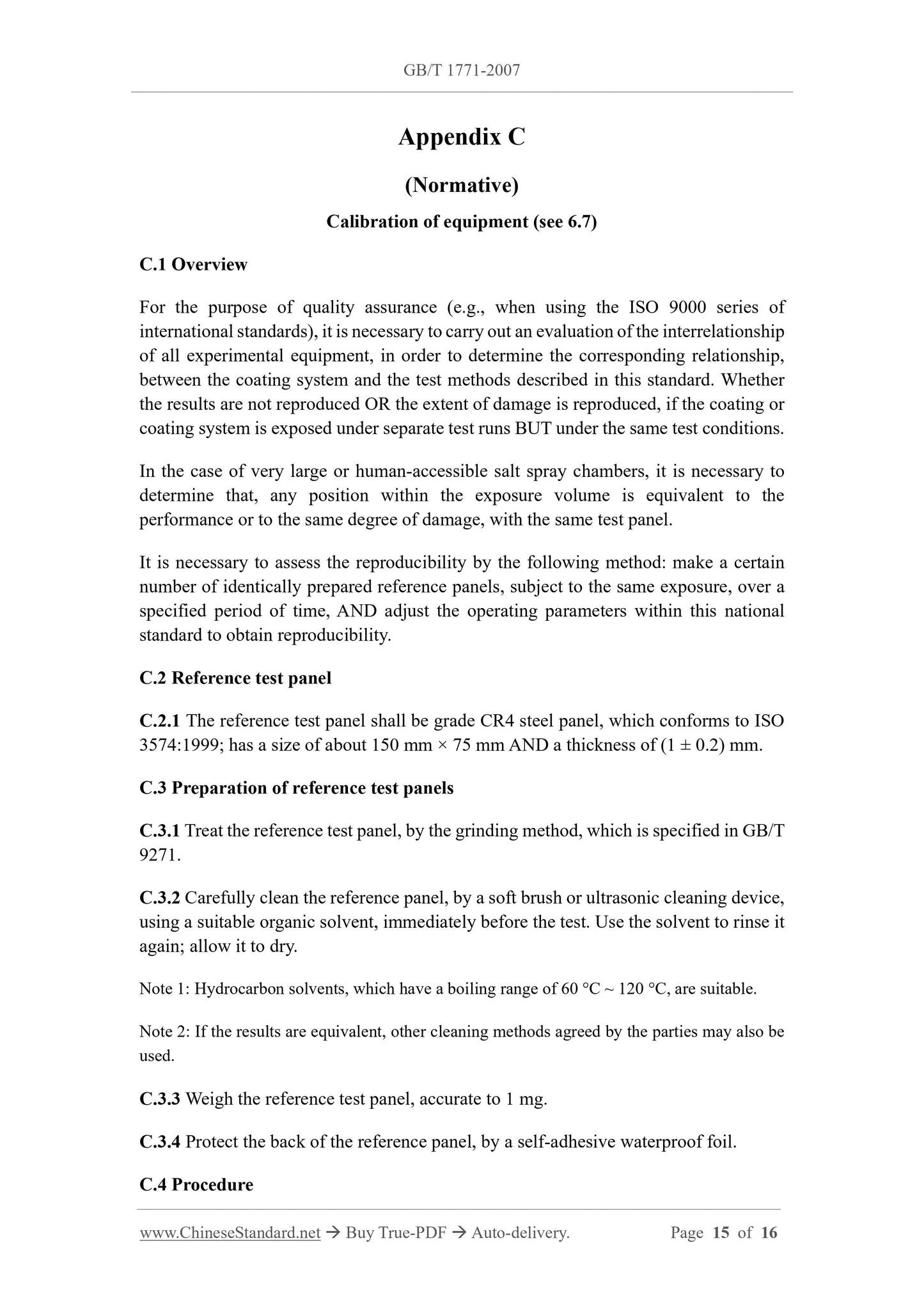1
/
of
8
www.ChineseStandard.us -- Field Test Asia Pte. Ltd.
GB/T 1771-2007 English PDF (GB/T1771-2007)
GB/T 1771-2007 English PDF (GB/T1771-2007)
Regular price
$125.00
Regular price
Sale price
$125.00
Unit price
/
per
Shipping calculated at checkout.
Couldn't load pickup availability
GB/T 1771-2007: Paints and Varnishes -- Determination of resistance to neutral salt spray (fog)
Delivery: 9 seconds. Download (and Email) true-PDF + Invoice.Get Quotation: Click GB/T 1771-2007 (Self-service in 1-minute)
Newer / historical versions: GB/T 1771-2007
Preview True-PDF
Scope
This standard specifies a method for determining the resistance of coatings to neutralsalt spray.
The methods, which are specified in this standard, can be used as a means of testing the
quality of paint or coating systems.
Basic Data
| Standard ID | GB/T 1771-2007 (GB/T1771-2007) |
| Description (Translated English) | Paints and Varnishes -- Determination of resistance to neutral salt spray (fog) |
| Sector / Industry | National Standard (Recommended) |
| Classification of Chinese Standard | G50 |
| Classification of International Standard | 87.040 |
| Word Count Estimation | 11,124 |
| Date of Issue | 2007-09-11 |
| Date of Implementation | 2008-04-01 |
| Older Standard (superseded by this standard) | GB/T 1771-1991 |
| Quoted Standard | GB/T 3186-2006; GB/T 6682; GB/T 9271; GB 9278; GB/T 13452.2; GB/T 20777-2006; ISO 3574-1999; ISO 4628-1-2003; ISO 4628-2-2003; ISO 4628-3-2003; ISO 4628-4-2003; ISO 4628-5-2003 |
| Adopted Standard | ISO 7253-1996, IDT |
| Regulation (derived from) | China Announcement of Newly Approved National Standards No. 10 of 2007 (No. 110 overall) |
| Issuing agency(ies) | General Administration of Quality Supervision, Inspection and Quarantine of the People's Republic of China, Standardization Administration of the People's Republic of China |
| Summary | This standard specifies the determination of resistance to neutral salt spray coating method. The method specified in this standard can be used as paint or coating system quality testing methods. |
Share
